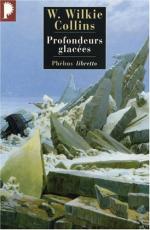|
This section contains 12,266 words (approx. 41 pages at 300 words per page) |

|
SOURCE: "Writing After Dark: Collins and Victorian Literary Culture," in Dead Secrets: Wilkie Collins and the Female Gothic, Yale University Press, 1992, pp. 82-185.
In the following essay, Heller examines the nineteenth-century division of sensation novels into "serious" or "popular" and "male" or "female." Heller focuses on Wilkie Collins's collection of short stories published in 1856, After Dark, to explore the way in which the presence of these divisions affected Collins's work.
Although Collins' novels after Basil continued to engage "modern life," he still wrote historical fiction, returning in the mid-1850s to the subject of revolution that had been thematically important in his earliest works. Recalling the setting of his ghost story about the French Revolution, "Nine O'Clock!" he serialized a lengthy tale about the Reign of Terror, "Sister Rose," in Dickens' journal Household Words in 1855, including it the next year in his collection of short stories After Dark...
|
This section contains 12,266 words (approx. 41 pages at 300 words per page) |

|


